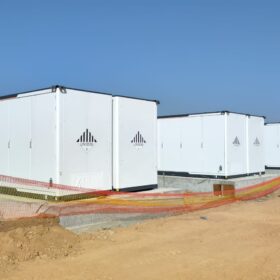India may introduce antidumping duties on PV glass from China, Vietnam
India’s Directorate General of Trade Remedies (DGTR) has proposed antidumping duties on solar glass imports from China and Vietnam. It says the landed cost of such imports aew lower than the selling prices and production costs of Indian manufacturers.
Chinese PV Industry Brief: Solar module exports hit 54.9 GW in Q3
China’s solar module exports fell to 16.53 GW in September, down 12% from August and 16% year on year, according to PV InfoLink. Third-quarter exports reached 54.9 GW, a 15% drop from the second quarter, but a 6% increase from the third quarter of 2023.
Singapore on track to hit 2030 solar targets
Research from the National University of Singapore indicates that Singapore could reach its 2 GW solar installation target by 2028, ahead of its 2030 deadline. The study suggests that the government could increase its long-term solar goals by adopting policies that promote better area utilization, subsidies, and advancements in panel efficiency.
New grid forming strategy for solar batteries
A group of scientists from a major Chinese grid operator have proposed to use an enhanced version of the particle swarm optimization algorithm to adjust inertia and damping coefficients in batteries linked to PV systems. Their approach was validated through a series of simulation and was found to enhance transient performance.
Indian state of Rajasthan tendering up to 2 GWh of battery storage capacity
State utility Rajasthan Vidyut Utpadan Nigam Ltd (RVUNL) is tendering for 500 MW/1 GWh of standalone battery energy storage systems (BESS) and may allot double that capacity, given sufficient demand.
Phnix presents new residential air-to-water heat pumps
The Chinese manufacturer said its new Heco series uses propane (R290) as a refrigerant and includes five models with a nominal capacity ranging from 6 kW to 17 kW.
Japanese scientists build stretchable organic solar cell with 14.2% efficiency
Researchers in Japan have built a stretchable organic solar cell than can ensure high efficiency levels while preventing crack initiation and propagation. The cell was built with a hole transport layer based on PEDOT:PSS treated with a new additive type.
Masdar, Sarawak Energy, Gentari plan large-scale floating solar in Malaysia
Abu Dhabi Future Energy Co. (Masdar) is teaming up with Malaysia’s Sarawak Energy and Gentari to assess the potential for a large-scale floating solar array on the northwestern coast of Borneo.
New research optimizes energy density in sodium-ion batteries
A machine learning model has identified Na[Mn0.36Ni0.44Ti0.15Fe0.05]O2 as the optimum composition to attain the highest energy density for sodium-ion (Na-ion) devices.
GoodWe launches residential solar carport
GoodWe has developed a residential solar carport that features its Polaris building-integrated PV (BIPV) panels. The carport, which is available in 4.8 kW and 8.0 kW variants, is designed to host one or two vehicles, respectively.










